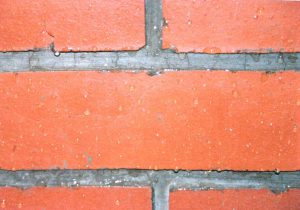Bricks
Types and Durability
| Description
Clay Brick
|
Expected Lifespan
(Years) |
Adjustment Factors |
| External Masonry Walls | ||
| First Grade designated bricks to SS 103: 1974. Includes facing brick. | 35+ | 1st stage adjustment factor:
In industrial areas (heavy polluted): -15% of no. of years In urban areas: -10% of no. of years In suburban areas: no adjustment 2nd stage adjustment factor: Within 20m from express way: -20% of no. of years Within 20m from major arterial road: -10% of no. of years Within 20m from light traffic road: – 5% of no. of years Test certificate from approved local testing authority : +15% of no. of years |
| Second Grade designated bricks to SS 103: 1974 | 35+ | |
| Third Grade designated bricks to SS 103: 1974 | 35+ | |
| Non designated bricks as to SS 103: 1974 | < 35+ |
Combination of adjustment factors (1st stage and 2nd stage) should be added to obtain the durability values
Refer to durability calculator.
Notes: SS 103: 1974 classified clay bricks into 3 grades based on their minimum compressive strength:
| First Grade | min 35 MN/ m² |
| Second Grade | min 20 MN/ m² |
| Third Grade | min 5.2 MN/ m² |
Facing bricks: generally intended for use in the location where they will be exposed to view and the actions of weather, and not intended to be cement rendered or otherwise decoratively treated after installation. It is under category ‘First Grade’.
Common brick: bricks intended for general building work but with no special claim to give an attractive appearance. Commonly specified with compressive strength of 20-25 MN/ m², therefore it is considered ‘Second Grade’.
BS 3921: 1985
Low soluble salt (L): Bricks are classified as of low (L) soluble salt content if the percentage of the following ions does not exceed the levels stated:
| Sulphate | 0.5% |
| Magnesium | 0.03% |
| Potasium | 0.03% |
| Sodium | 0.03% |
Normal soluble salt (N): The percentage by mass of soluble ions shall not exceed the following:
| The sum of the contents of sodium, potassium and magnesium | 0.25% |
| Sulphate | 1.6% |
